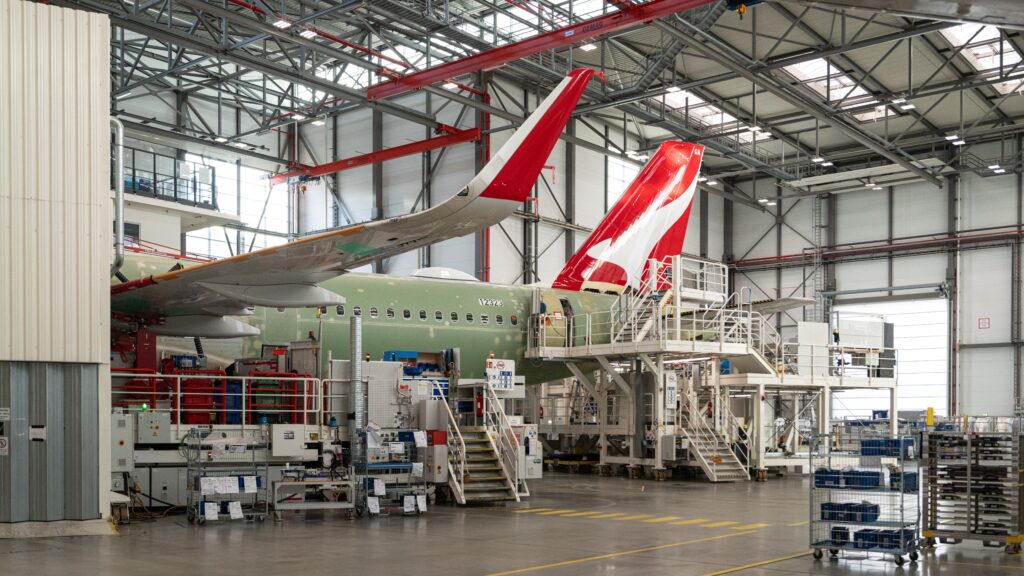
Qantas, Australia’s national airline, is poised to receive its first Airbus A321XLR next week, marking a significant milestone in its fleet renewal strategy. The delivery of this next-generation aircraft is part of a larger order of 28 units, which the airline plans to utilize initially on domestic routes before expanding to international destinations. This move is seen as a bold step towards enhancing Qantas’s operational capabilities and network reach.
The introduction of the Airbus A321XLR, known for its medium to long-range capabilities, will enable Qantas to explore new niche routes, particularly to Asia from major Australian cities. The airline has already hinted at potential direct flights such as Melbourne to Manila and Perth to Phuket, which could redefine travel options for passengers.
A Crucial Component of Fleet Renewal
The arrival of the A321XLR is a pivotal part of Qantas’s fleet renewal program, aimed at replacing some of its aging Boeing 737s, many of which have been in service for up to 25 years. According to Executive Traveller, the first A321XLR is scheduled to depart from Hamburg, with its inaugural landing at Qantas’s Hangar 96 in Australia set for July 2 at 10:30 AM.
Initially, the aircraft is expected to serve Qantas’s most popular domestic routes, including Sydney, Melbourne, and Brisbane. As one of the first airlines to operate this aircraft type, following Iberia, Aer Lingus, and Wizz Air, Qantas is positioning itself at the forefront of aviation innovation.
Enhanced Passenger Experience
The A321XLR offers significant improvements over the current short-haul aircraft in Qantas’s fleet. Passengers will benefit from larger overhead lockers, providing 60% more space compared to the older 737 jets, accommodating at least one wheeled carry-on bag per passenger.
The aircraft’s extended length, approximately five meters longer than the Boeing 737, allows for more seats without sacrificing legroom. The domestic configuration includes 20 business class seats in a 2-by-2 layout, offering a 37″ seat pitch and enhanced comfort features such as extendable calf and footrests.
Economy class will feature a standard 3-by-3 layout with 177 seats, an increase from the 162 seats on the Boeing 737, along with slightly wider seats maintaining a 30″ seat pitch. All seats will be equipped with USB-A and USB-C power, and business class will include wireless charging options. However, the aircraft will lack seatback entertainment, encouraging passengers to use the Qantas app for in-flight entertainment.
Unique Aircraft Registration and Historical Significance
In a LinkedIn post, Sarah Collins, Qantas Schedule Planner and Network Scheduling, shared insights into the registration of the new Airbus A321XLR. The aircraft will carry the registration VH-OGA, continuing a tradition of reusing historical registrations from the airline’s retired Boeing 767-300 fleet. The aircraft will be nicknamed ‘Great Ocean Road,’ a nod to the scenic route in Victoria, Australia, famous for its breathtaking coastal views and the Twelve Apostles rock formation.
The aircraft, previously registered as D-AXXE in Germany, completed its first test flight on April 8, 2025, and is powered by two Pratt & Whitney PW1133G engines. This delivery marks a new chapter in Qantas’s strategic development plans, as the airline eagerly anticipates the aircraft’s arrival next week.
Implications for Qantas and the Aviation Industry
The introduction of the Airbus A321XLR into Qantas’s fleet is expected to have significant implications for both the airline and the broader aviation industry. By replacing older aircraft with more efficient models, Qantas aims to reduce its carbon footprint and improve fuel efficiency, aligning with global sustainability trends.
Experts suggest that the A321XLR’s capabilities could open up new markets and enhance connectivity between Australia and Asia, offering passengers more direct flight options and potentially boosting tourism and business travel. This strategic move is likely to influence other airlines to consider similar fleet upgrades as they strive to remain competitive in an evolving industry.
As Qantas prepares to welcome its first A321XLR, the airline is set to embark on a transformative journey that promises to reshape its network and enhance the travel experience for its passengers. The coming weeks will be crucial as the airline integrates this new aircraft into its operations, setting the stage for a new era in Australian aviation.







